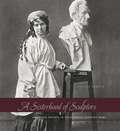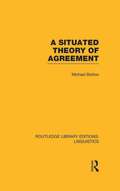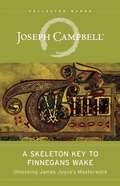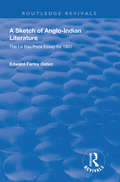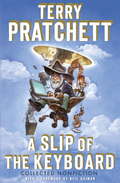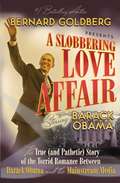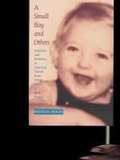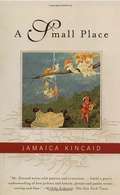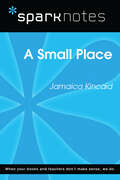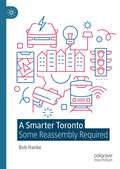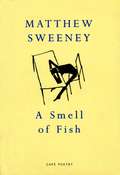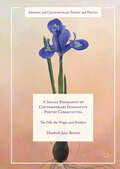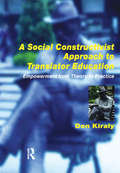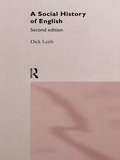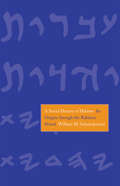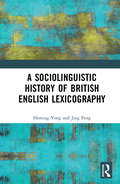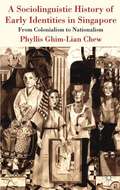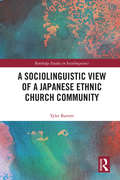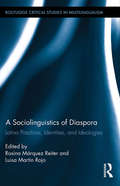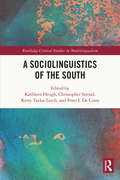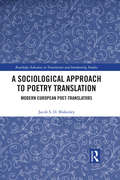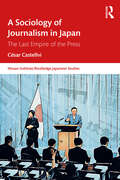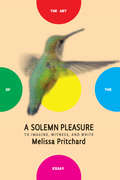- Table View
- List View
A Sisterhood of Sculptors: American Artists in Nineteenth-Century Rome
by Melissa DabakisThis project is made possible through support from the Terra Foundation for American Art.When Elizabeth Cady Stanton penned the Declaration of Sentiments for the first women’s rights convention, held in Seneca Falls, New York, in 1848, she unleashed a powerful force in American society. In A Sisterhood of Sculptors, Melissa Dabakis outlines the conditions under which a group of American women artists adopted this egalitarian view of society and negotiated the gendered terrain of artistic production at home and abroad. Between 1850 and 1876, a community of talented women sought creative refuge in Rome and developed successful professional careers as sculptors. Some of these women have become well known in art-historical circles: Harriet Hosmer, Edmonia Lewis, Anne Whitney, and Vinnie Ream. The reputations of others have remained, until now, buried in the historical record: Emma Stebbins, Margaret Foley, Sarah Fisher Ames, and Louisa Lander. At midcentury, they were among the first women artists to attain professional stature in the American art world while achieving international fame in Rome, London, and other cosmopolitan European cities. In their invention of modern womanhood, they served as models for a younger generation of women who adopted artistic careers in unprecedented numbers in the years following the Civil War.At its core, A Sisterhood of Sculptors is concerned with the gendered nature of creativity and expatriation. Taking guidance from feminist theory, cultural geography, and expatriate and postcolonial studies, Dabakis provides a detailed investigation of the historical phenomenon of women’s artistic lives in Rome in the mid-nineteenth century. As an interdisciplinary examination of femininity and creativity, it provides models for viewing and interpreting nineteenth-century sculpture and for analyzing the gendered status of the artistic profession.
A Situated Theory of Agreement (Routledge Library Editions: Linguistics)
by Michael BarlowTypical cases of agreement are easy to identify, but where the boundaries of agreement lie depend on what aspects of the agreement relation are considered to be defining properties. It is a short step from viewing agreement in the traditional way, as a matching of features, to defining agreement as any relation that ensures consistency of information in two separate structures. This book takes as its topic agreement as it is traditionally conceived, one that only involves morphosyntactic categories.
A Skeleton Key to Finnegans Wake: Unlocking James Joyce's Masterwork
by Joseph Campbell Henry Morton RobinsonThis book outlines the basic action of Joyce's book, simplifies and clarifies the complex web of images and allusions, and provides an understandable, continuous narrative from which the reader can venture out on his or her own.
A Sketch of Anglo-Indian Literature: The Le Bas Prize Essay for 1907 (Routledge Revivals)
by Edward Farley OatenFirst published in 1908, Farley pioneering essay on the subject of Anglo Indian literature, by this point had never been attempted to be explored in such detail at the time of winning the coveted Cambridge University Le Bas Prize Essay, 1907. Focusing on prominent Anglo English writers , such as Rudyard Kipling , Farley Oaten and examining the plethora of their work in the context of the British Raj.
A Slip of the Keyboard
by Terry Pratchett Neil GaimanA collection of essays and other non fiction from Terry Pratchett, spanning the whole of his writing career from his early years to the present day. Terry Pratchett has earned a place in the hearts of readers the world over with his bestselling Discworld series -- but in recent years he has become equally well-known and respected as an outspoken campaigner for causes including Alzheimer's research and animal rights. A Slip of the Keyboard brings together for the first time the finest examples of Pratchett's non fiction writing, both serious and surreal: from musings on mushrooms to what it means to be a writer (and why banana daiquiris are so important); from memories of Granny Pratchett to speculation about Gandalf's love life, and passionate defences of the causes dear to him. With all the humour and humanity that have made his novels so enduringly popular, this collection brings Pratchett out from behind the scenes of the Discworld to speak for himself -- man and boy, bibliophile and computer geek, champion of hats, orangutans and Dignity in Dying. Snuff was the bestselling adult hardcover novel of 2011. A Blink of the Screen, Terry's short fiction collection, was also one of the bestselling hardcovers of 2012.From the Hardcover edition.
A Slobbering Love Affair: The True (and Pathetic) Story of the Torrid Romance Between Barack Obama and the Mainstream Media
by Bernard GoldbergThis Time They Went Beyond Bias. From the day Barack Obama announced his candidacy to the moment he took the oath of office, the mainstream media fawned over him like love-struck school girls. Even worse, this time they went beyond media bias to media activism, says CBS veteran and #1 bestselling author Bernard Goldberg. In his most provocative book yet, A Slobbering Love Affair, Goldberg shows how the mainstream media's hopelessly one-sided coverage of President Obama has shredded America's trust in journalism and endangered our free society. Highlighting the media's laughable coverage and shameless hypocrisy, Goldberg exposes how liberal reporters ignored important issues, focused on trivial matters, and attacked those who dared to question "The One." Goldberg also argues that the media's blatant disregard for their traditional role as the fourth estate and government watchdog has endangered America and eroded the notion of a free and fair press.
A Small Boy and Others: Imitation and Initiation in American Culture from Henry James to Andy Warhol
by Michael MoonIn A Small Boy and Others, Michael Moon makes a vital contributon to our understanding of the dynamics of sexuality and identity in modern American culture. He explores a wide array of literary, artistic, and theatrical performances ranging from the memoirs of Henry James and the dances of Vaslav Nijinsky to the Pop paintings of Andy Warhol and such films as Midnight Cowboy, Blue Velvet, and Jack Smith's Flaming Creatures.Moon illuminates the careers of James, Warhol, and others by examining the imaginative investments of their protogay childhoods in their work in ways that enable new, more complex cultural readings. He deftly engages notions of initiation and desire not within the traditional framework of "sexual orientation" but through the disorienting effects of imitation. Whether invoking the artist Joseph Cornell's early fascination with the Great Houdini or turning his attention to James's self-described "initiation into style" at the age of twelve--when he first encountered the homoerotic imagery in paintings by David, Géricault, and Girodet--Moon reveals how the works of these artists emerge from an engagement that is obsessive to the point of "queerness."Rich in historical detail and insistent in its melding of the recent with the remote, the literary with the visual, the popular with the elite, A Small Boy and Others presents a hitherto unimagined tradition of brave and outrageous queer invention. This long-awaited contribution from Moon will be welcomed by all those engaged in literary, cultural, and queer studies.
A Small Place
by Jamaica KincaidKincaid's book appraises the small island of Antigua in the British West Indies where she grew up and makes vivid the impact of European colonization and tourism.
A Small Place (SparkNotes Literature Guide Series)
by SparkNotesA Small Place (SparkNotes Literature Guide) by Jamaica Kincaid Making the reading experience fun! Created by Harvard students for students everywhere, SparkNotes is a new breed of study guide: smarter, better, faster. Geared to what today's students need to know, SparkNotes provides: *Chapter-by-chapter analysis *Explanations of key themes, motifs, and symbols *A review quiz and essay topicsLively and accessible, these guides are perfect for late-night studying and writing papers
A Smarter Toronto: Some Reassembly Required
by Bob HankeThis book bridges media, technocultural, urban, and journalism studies to examine the role of journalism in relation to a smart city project on Toronto’s waterfront. From the announcement of the public-private partnership called Sidewalk Toronto to the project’s termination, a mediatized controversy unfolded. Through an assemblage approach to this project and a case study of The Globe and Mail and the Toronto Star, it follows the actors and chronicles the Quayside project story as a conversation about the promise and perils of a future “smart” neighbourhood. In the news of Waterfront Toronto, Sidewalk Labs, other actors, events, and developments, there were multiple voices and views, interpretations and arguments, that manifested conflicting interests and values. As a locally situated actor, journalism produced a porous discourse that expressed a proposeand- public pushback movement. This work of articulating mediation conditioned the project’s alteration and dissolution within asymmetrical relations of power. In addition to a wave of opposition that inflected the project’s enactment, a time lag between project time and governmental policymaking made the controversy over this future urban space intractable. With their residual symbolic power, quality journalism contributed to dialogical urban learning.
A Smell Of Fish
by Matthew SweeneyThe poems in A Smell of Fish connect and radiate like the spokes of a wheel: haiku, sestinas, poems beginning with a line by somebody else or sparked off by foreign travel, a version of Dante, a sea sequence set on the Suffolk coast, and - long overdue - Matthew Sweeney's own version of the old Irish poem where his namesake is turned into a bird.In this, his seventh collection, we are back in a world where all explanations are withheld. 'If Beckett and Kafka come to mind', as Sean O'Brien wrote in his essay on Sweeney in The Deregulated Muse, 'they are not simply influences but kindred imaginations'. So we encounter a valley mysteriously filling with the smell of fish, second-world-war planes reappearing over London, a secret attic mural of a naked ex-lover, a cosmonaut abandoned on the moon, and a subterranean tunnel that runs the length of Ireland. Whatever the subject, we are in the confident hands of one of the most imaginatively gifted poets now writing.
A Snail in May: Buildup Unit 6 Lap Book (Buildup Ser.)
by Becka Moor Tracy Lane Cindy PeattieNIMAC-sourced textbook
A Social Biography of Contemporary Innovative Poetry Communities: The Gift, the Wager, and Poethics (Modern and Contemporary Poetry and Poetics)
by Elizabeth-Jane BurnettThis book offers a new reading of Marcell Mauss' and Lewis Hyde's theories of poetry as gift, exploring poetry exchanges within 20th and 21st century communities of poets, publishers, audiences and readers operating along a gift economy. The text considers trans-Atlantic case studies across fields of performance and ecopoetics, small press publishing and poetry institutions, with focus on Joan Retallack, Bob Holman, Anne Waldman, Bob Cobbing, and feminist performance. Elizabeth-Jane Burnett focuses on innovative poetry that resists commodification, drawing on ethnography to show parallels with gift giving tribal societies; she also considers the ethical, philosophical and psychological motivations for such exchanges with particular reference to poethics. This book will appeal to researchers in modern poetry, poetry teachers, advanced students of modern literature, and those with an interest in poetry.
A Social Constructivist Approach to Translator Education: Empowerment from Theory to Practice
by Donald KiralyThis is a book about the teaching and particularly the acquisition of translation-related skills and knowledge. Well grounded in theory, the book also provides numerous examples drawn from the author's extensive classroom experience in translator education and foreign language teaching. Kiraly uses a number of classroom case studies to illustrate his method, including: introductory courses in translation studies, project-based translation practice courses, translation studies seminars, as well as naturalistic foreign language learning classes for student translators. The book is primarily geared toward translator educators and programme administrators, as well as students of translation, and will also be of interest to foreign language teachers who incorporate translation into their teaching, to translation scholars, and to others involved in the world of translation.
A Social History of English
by Dick Leith Mr Dick LeithA Social History of English is the first history of the English language to utilize the techniques, insights and concerns of sociolinguistics. Written in a non-technical way, it takes into account standardization, pidginization, bi- and multilingualism, the issues of language maintenance and language loyalty, and linguistic variation.This new edition has been fully revised. Additions include: * new material about 'New Englishes' across the world* a new chapter entitled 'A Critical Linguistic History of English Texts'* a discussion of problems involved in writing a history of EnglishAll terms and concepts are explained as they are introduced, and linguistic examples are chosen for their accessibility and intelligibility to the general reader.It will be of interest to students of Sociolinguistics, English Language, History and Cultural Studies.
A Social History of Hebrew
by William M. SchniedewindMore than simply a method of communication shared by a common people, the Hebrew language was always an integral part of the Jewish cultural system and, as such, tightly interwoven into the lives of the prophets, poets, scribes, and priests who used it. In this unique social history, William Schniedewind examines classical Hebrew from its origins in the second millennium BCE until the Rabbinic period, when the principles of Judaism as we know it today were formulated, to view the story of the Israelites through the lens of their language. Considering classical Hebrew from the standpoint of a writing system as opposed to vernacular speech, Schniedewind demonstrates how the Israelites' long history of migration, war, exile, and other momentous events is reflected in Hebrew's linguistic evolution. An excellent addition to the fields of biblical and Middle Eastern studies, this fascinating work brings linguistics and social history together for the first time to explore an ancient culture.
A Sociolinguistic History of British English Lexicography
by Heming Yong Jing PengA Sociolinguistic History of British English Lexicography traces the evolution of British English dictionaries from their earliest roots to the end of the 20th century by adopting both sociolinguistic and lexicographical perspectives. It attempts to break out of the limits of the dictionary-ontology paradigm and set British English dictionary-making and research against a broader background of socio-cultural observations, thus relating the development of English lexicography to changes in English, accomplishments in English linguistics, social and cultural progress, and advances in science and technology. It unfolds a vivid, coherent and complete picture of how English dictionary-making develops from its archetype to the prescriptive, the historical, the descriptive and finally to the cognitive model, how it interrelates to the course of the development of a nation's culture and the historical growth of its lexicographical culture, as well as how English lexicography spreads from British English to other major regional varieties through inheritance, innovation and self-perfection. This volume will be of interest to students and academics of English lexicography, English linguistics and world English lexicography.
A Sociolinguistic History of Early Identities in Singapore
by Phyllis Ghim-Lian ChewWhat role does race, geography, religion, orthography and nationalism play in the crafting of identities? What are the origins of Singlish? This book offers a thorough investigation of old and new identities in Asia's most global city, examined through the lens of language.
A Sociolinguistic View of A Japanese Ethnic Church Community (Routledge Studies in Sociolinguistics)
by Tyler BarrettDrawing on sociolinguistic approaches, this book presents unique insights into a Japanese ethnic church community in Canada and the ways in which churches mediate issues of linguistic, cultural, and religious hybridity in addressing the needs of their diverse populations. The book integrates discourse analytic methods with ethnographic perspectives to explore the complex dynamics of negotiating their different members’ preferred language practices. The volume outlines the ways in which ethnic churches in this community build themselves around intentionally preferred Japanese language practices but make accommodations for English-language speakers in their own families, in turn making further accommodations for ESL student speakers new to the country. Barrett explores the impact of church members’ transcultural experiences in broader decisions around language planning and policy in these churches, shedding light on the distinct implications of hybrid identities on discourses in localized communities. // The volume will be of interest to scholars in sociolinguistics, applied linguistics, and religious studies.
A Sociolinguistics of Diaspora: Latino Practices, Identities, and Ideologies (Routledge Critical Studies in Multilingualism)
by Rosina M Luisa MartThis volume brings together scholars in sociolinguistics and the sociology of new media and mobile technologies who are working on different social and communicative aspects of the Latino diaspora. There is new interest in the ways in which migrants negotiate and renegotiate identities through their continued interactions with their own culture back home, in the host country, in similar diaspora elsewhere, and with the various "new" cultures of the receiving country. This collection focuses on two broad political and social contexts: the established Latino communities in urban settings in North America and newer Latin American communities in Europe and the Middle East. It explores the role of migration/diaspora in transforming linguistic practices, ideologies, and identities.
A Sociolinguistics of the South (Routledge Critical Studies in Multilingualism)
by Peter I. De Costa Christopher Stroud Kerry Taylor-Leech Kathleen HeughThis book brings to life initiatives among scholars of the south and north to understand better the intelligences and pluralities of multilingualisms in southern communities and spaces of decoloniality. Chapters follow a longue durée perspective of human co-existence with communal presents, pasts, and futures; attachments to place; and insights into how multilingualisms emerge, circulate, and alter over time. Each chapter, informed by the authors’ experiences living and working among southern communities, illustrates nuances in ideas of south and southern, tracing (dis-/inter-) connected discourses in vastly different geopolitical contexts. Authors reflect on the roots, routes and ecologies of linguistic and epistemic heterogeneity while remembering the sociolinguistic knowledge and practices of those who have gone before. The book re-examines the appropriacy of how theories, policies, and methodologies ‘for multilingual contexts’ are transported across different settings and underscores the ethics of research practice and reversal of centre and periphery perspectives through careful listening and conversation. Highlighting the potential of a southern sociolinguistics to articulate a new humanity and more ethical world in registers of care, hope, and love, this volume contributes to new directions in critical and decolonial studies of multilingualism, and to re-imagining sociolinguistics, cultural studies, and applied linguistics more broadly.
A Sociological Approach to Poetry Translation: Modern European Poet-Translators (Routledge Advances in Translation and Interpreting Studies)
by Jacob S. BlakesleyThis volume provides an in-depth comparative study of translation practices and the role of the poet-translator across different countries and in so doing, demonstrates the need for poetry translation to be extended beyond close reading and situated in context. Drawing on a corpus composed of data from national library catalogues and Worldcat, the book examines translation practices of English-language, French-language, and Italian-language poet-translators through the lens of a broad sociological approach. Chapters 2 through 5 look at national poetic movements, literary markets, and the historical and socio-political contexts of translations, with Chapter 6 offering case studies of prominent and representative poet-translators from each tradition. A comprehensive set of appendices offers readers an opportunity to explore this data in greater detail. Taken together, the volume advocates for the need to study translation data against broader aesthetic, historical, and political trends and will be of particular interest to students and scholars in translation studies and comparative literature.
A Sociology of Journalism in Japan: The Last Empire of the Press (ISSN)
by César CastellviThis book represents an in-depth analysis of journalism in Japan during the golden era of the daily press and the gradual introduction of digital technology starting from the mid-1980s to the late 2010s.By presenting firsthand testimony from journalists and field notes collected from fieldwork in the newsroom of one of the country's largest newspapers, this book provides a unique insight into Japan’s highly active yet relatively under-institutionalized journalistic profession. It also explores the changes experienced by the organizational development of Japanese journalism in response to broader changes in Japanese society, such as the emergence of social networks, the evolution of reading practices, the demographic situation, and the new aspirations of the Japanese youth.Based on an extensive ethnographic fieldwork carried out by the author over several years, this book will be of huge interest to students and scholars of Japanese society, journalism, and media studies.
A Solemn Pleasure
by Bret Anthony Johnston Melissa PritchardPoets & Writers "Best Books for Writers" selectionPublishers Weekly "Top 10: Literary Biographies, Essays & Criticism"In an essay entitled "Spirit and Vision" Melissa Pritchard poses the question: "Why write?" Her answer reverberates throughout A Solemn Pleasure, presenting an undeniable case for both the power of language and the nurturing constancy of the writing life. Whether describing the deeply interior imaginative life required to write fiction, searching for the lost legacy of American literature as embodied by Walt Whitman, being embedded with a young female GI in Afghanistan, traveling with Ethiopian tribes, or revealing the heartrending story of her informally adopted son William, a former Sudanese child slave, this is nonfiction vividly engaged with the world. In these fifteen essays, Pritchard shares her passion for writing and storytelling that educates, honors, and inspires.Melissa Pritchard is the author of, most recently, the novel Palmerino and the short story collection The Odditorium. Her books have received the Flannery O'Connor, Janet Heidinger Kafka, and Carl Sandburg awards and two of her short fiction collections were New York Times Notable Book and Editors' Choice selections. Pritchard has worked as a journalist in Afghanistan, India, and Ethiopia, and her nonfiction has appeared in various publications, including O, The Oprah Magazine, Arrive, Chicago Tribune, and Wilson Quarterly. She lives in Phoenix, Arizona.
